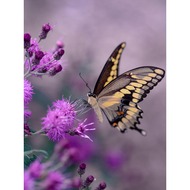Going 3D with GRC - 5th Grade
(View Complete Item Description)Welcome to our Going 3-D with GRC website. This site is a collection of vetted, three-dimensional lessons aligned to the Next Generation Science Standards and state standards developed from the Framework for K-12 Science Education. The lessons were developed by teachers across districts and states utilizing local phenomena. The teachers who developed these lessons participate in professional development with Brett D. Moulding and Kenneth L. Huff over the past five years. Brett was on the committee that wrote the Framework for K-12 Science Education and a lead writer of the NGSS. Kenneth was also on the NGSS writing team and has spent the last 5 years applying these lessons in his classroom. If you have questions or suggestions about these lessons please contact Brett at BrettDMoudling@gmail.com.
Material Type: Activity/Lab, Lesson Plan




















